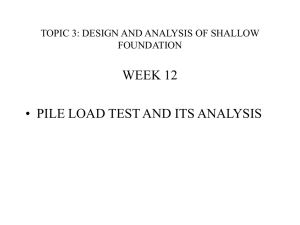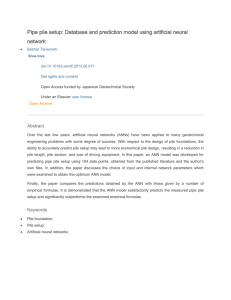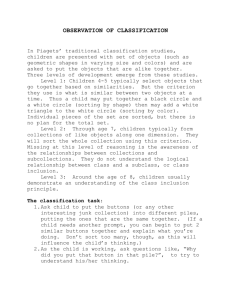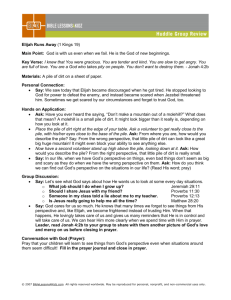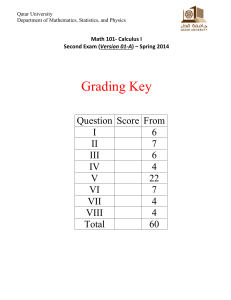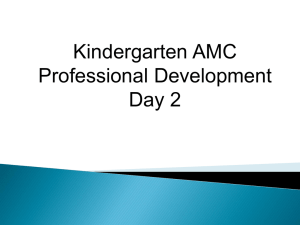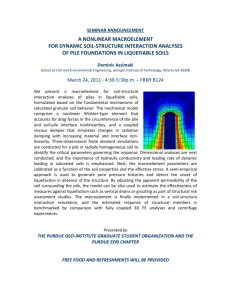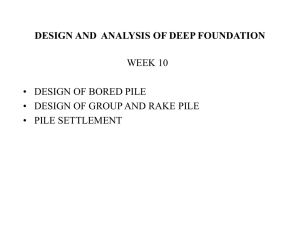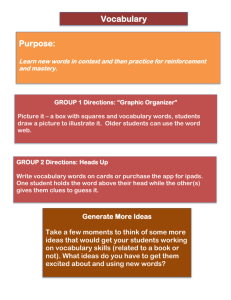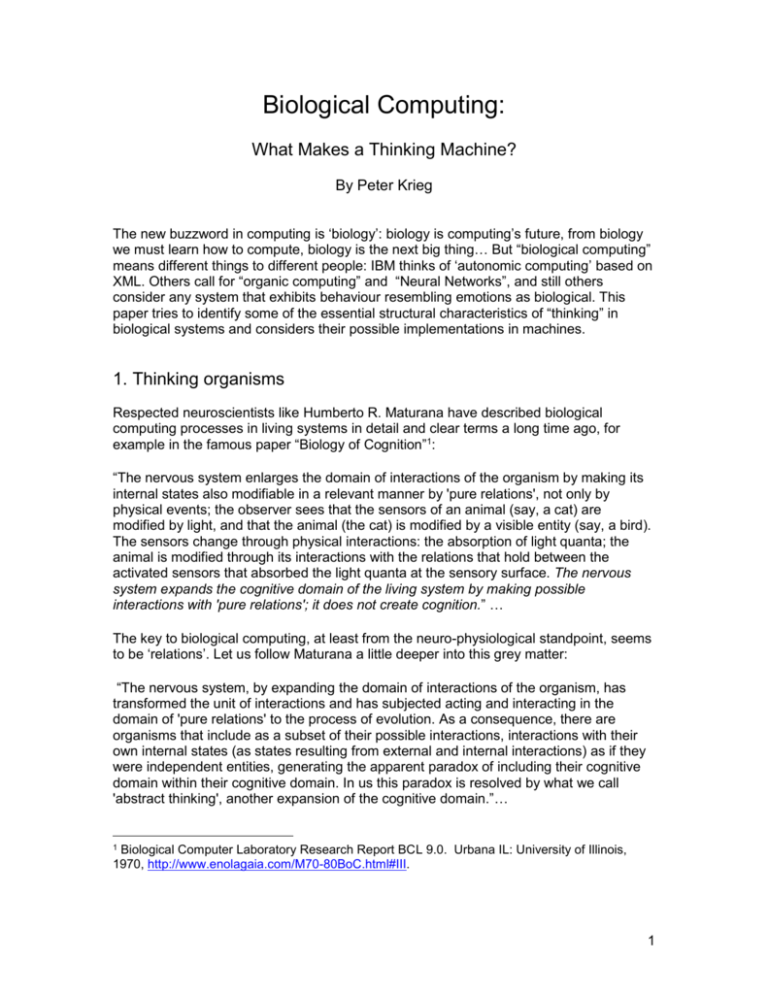
Biological Computing:
What Makes a Thinking Machine?
By Peter Krieg
The new buzzword in computing is ‘biology’: biology is computing’s future, from biology
we must learn how to compute, biology is the next big thing… But “biological computing”
means different things to different people: IBM thinks of ‘autonomic computing’ based on
XML. Others call for “organic computing” and “Neural Networks”, and still others
consider any system that exhibits behaviour resembling emotions as biological. This
paper tries to identify some of the essential structural characteristics of “thinking” in
biological systems and considers their possible implementations in machines.
1. Thinking organisms
Respected neuroscientists like Humberto R. Maturana have described biological
computing processes in living systems in detail and clear terms a long time ago, for
example in the famous paper “Biology of Cognition”1:
“The nervous system enlarges the domain of interactions of the organism by making its
internal states also modifiable in a relevant manner by 'pure relations', not only by
physical events; the observer sees that the sensors of an animal (say, a cat) are
modified by light, and that the animal (the cat) is modified by a visible entity (say, a bird).
The sensors change through physical interactions: the absorption of light quanta; the
animal is modified through its interactions with the relations that hold between the
activated sensors that absorbed the light quanta at the sensory surface. The nervous
system expands the cognitive domain of the living system by making possible
interactions with 'pure relations'; it does not create cognition.” …
The key to biological computing, at least from the neuro-physiological standpoint, seems
to be ‘relations’. Let us follow Maturana a little deeper into this grey matter:
“The nervous system, by expanding the domain of interactions of the organism, has
transformed the unit of interactions and has subjected acting and interacting in the
domain of 'pure relations' to the process of evolution. As a consequence, there are
organisms that include as a subset of their possible interactions, interactions with their
own internal states (as states resulting from external and internal interactions) as if they
were independent entities, generating the apparent paradox of including their cognitive
domain within their cognitive domain. In us this paradox is resolved by what we call
'abstract thinking', another expansion of the cognitive domain.”…
1
Biological Computer Laboratory Research Report BCL 9.0. Urbana IL: University of Illinois,
1970, http://www.enolagaia.com/M70-80BoC.html#III.
1
You have noticed probably that Maturana is explaining the nervous system not in terms
of a computer. He is trying to understand it in terms of its biology, structure and
operations. This is a very important distinction. Because if we explain the brain in the
terms of our current computers, there is nothing we can learn for computing (and little, I
guess for understanding the brain). But if we follow the biological structure, there is a lot
to learn:
“Furthermore, the expansion of the cognitive domain into the domain of 'pure relations'
by means of a nervous system allows for non-physical interactions between organisms
such that the interacting organisms orient each other toward interactions within their
respective cognitive domains. Herein lies the basis for communication: the orienting
behavior becomes a representation of the interactions toward which it orients, and a unit
of interactions in its own terms. But this very process generates another apparent
paradox: there are organisms that generate representations of their own interactions by
specifying entities with which they interact as if they belonged to an independent
domain, while as representations they only map their own interactions. In us this paradox
is resolved simultaneously in two ways:
(a) We become observers through recursively generating representations of our
interactions, and by interacting with several representations simultaneously we
generate relations with the representations of which we can then interact and
repeat this process recursively, thus remaining in a domain of interactions always
larger than that of the representations.
(b) We become self-conscious through self-observation; by making descriptions
of ourselves (representations), and by interacting with our descriptions we can
describe ourselves describing ourselves, in an endless recursive process.”
I have quoted extensively from Maturana’s groundbreaking paper because his
argumentation seems essential for understanding the relational character of the
operations that build knowledge and information in our brains. There are, however, at
least three terms missing in Maturana’s description which are very familiar and even
essential in our understanding of computing today: “data”, “input and “output”.
From his description it is obvious that no “information” from the outside is involved in
biologic systems, and no encoding or representation of ‘data’ takes place. In fact, there
seems to be no information and data input or output in living systems at all. If we want to
uphold the general idea of “data” in this context, it can only refer to the ‘impressions’
produced in our neural system by relating relations as representations of internal
structural changes. These impressions are what we usually call “the world”. This world
as the ‘reality’ of the living system is generated in the cognitive domain of the living
system and is not a direct representation of an environment. As Heinz von Foerster,
founder and director of the legendary “Biological Computer Lab” at the University of
Illinois in Champaign/Urbana used to say, the environment is an “invention” of the living
system…
If computers are to be machines that can simulate cognitive processes such as thinking,
abstraction, conceptualization and prediction, this issue becomes quite important. First,
we must clearly distinct between a technical machine and a living organism. Organisms,
again according to Maturana, must be considered operationally closed ‘autopoietic’
systems that construct their frames of reference strictly and exclusively internally,
although in interaction with an environment. Their frame of reference is determined by
2
their organization, which Maturana defines as those relations, which relate the system to
a class (as distinct from structure as those components and relations, which characterize
the system as a special case within its class).
Technical machines, on the other hand, receive their frames of reference from outside,
from the human beings constructing them. They are by definition not autopoietic, selfreferential systems. This is actually a good thing because it allows us to construct
machines for our own purposes and goals, enabling us to give instructive information to
the machine which it can transform into actions to achieve tasks that were also externally
defined by the human users. It is us, the human user, who wants to retain the frames of
reference of, and thus the control over, the machine. In order to serve this purpose,
machines must be input-output processing. So here is one lesson we should perhaps
not learn from biology…
Maturana defines thinking in living systems as relating states (as products of relations) to
other such states:
“I consider that in a state-determined nervous system, the neurophysiological process
that consist in its interacting with some of its own internal states as if these were
independent entities corresponds to what we call thinking” (Maturana 1970)
Abstract thinking adds another dimensionality:
“A nervous system that is capable of treating its internally generated states of activity as
different from its externally generated states, that is, of distinguishing their origin, is
capable of abstract thinking”” Abstraction leading to concepts could be described as a
process where recursively relations of relations are generated in “a mode of operation of
the nervous system that reflects functionally its internal anatomical projection (possibly
multiply) onto itself” (Maturana 1970)
Abstraction, in other words, could be understood as a process of relating relations to
interactions with an environment in next higher orders to relations caused by internal
processes as well as previous interactions with the environment, until stable relations
with the organization of the system are reached. This is, of course, an entirely
ontogenetic process ending up at concepts and abstractions and not starting from them.
In the cognitive domain, especially in the domain of language, we can, however, play
this game in all directions, starting with relations representing abstractions as ‘signs’ (in
semiotic thinking) and concatenating representations of signs as symbols into chains of
words and sentences (producing ‘meaning’ as stable relations). In fact, we probably
always start from somewhere in the middle, like Franz Kafka , who noted in his diary: “All
things come to my mind not from the root, but first from somewhere in their middle”.
I even suspect that we play in both directions simultaneously: with every cognitive ‘step’
we generalize concepts of things and also concretize the things themselves. This would
require to move in at least two topologies at the same time: One “up” and the other one
“down”…
3
2. Thinking Machines
Computing today is a very different affair: following the Turing and Alonzo Church
paradigm we start with symbols which we represent in the machine as data in cells and
process into resulting output. The idea of relations has nearly been lost in this approach:
Data are represented only in relation to their form (standard, type) and deposited in
containers (documents, folders, files…) that in turn are related to a hierarchical data
structure like a file system. Relations of a data sequence to itself (i.e. to its subsequences) or to other occurrences of the same sequence/ subsequence at some other
time or location in the system are lost, unless specially provided for. The only relations
the system knows have to be pre-defined by the user (as in a data structure or table) or
later implemented (e.g. by lists like indices).. But even an index is not able to transcend
the container of a format or type. This method constitutes ‘logic closure’, i.e. the system
can only identify relations in one single logic domain at a time, defined by the program.
Only data belonging to this program and/or its predefined data types can be used in the
operations of the program. Search engines usually can find only what they have
accessed and indexed.
Biological computing can be approached in two different ways: one is to look at the
observable behaviour of a living system and to try to imitate it with whatever means are
available in computing. The result might look very similar to a living system from the
outside: Hollywood animatronics or computer generated creatures, but also “Artificial
Life” programs and “Artificial Intelligence” models basically take this road. The functional
and structural characteristics of these machines are, however, unrelated to those of the
systems they mimic.
A structural approach would try to simulate some of the essential functional and
structural characteristics of biological systems. One key characteristic is, as we have
seen, that it does not represent or compute data, but strictly relations. It would operate
with relations and relations of relations and generate data dynamically. Some immediate
differences to our current approach are obvious:
by not computing data the system would not be computing “real estate” which
takes physical address space in the memory. Data would be ‘virtual’.
having relations as its only computable objects and treating relations between
these objects as referable objects also, allows to compute relations of relations in
a unlimited way without getting overwhelmed by growing data volumes.
by being able to recursively compute relations of relations, the system could be
able to build abstractions and concepts.
Recursive operations were very fashionable in cybernetics and later in Chaos theory.
Below, two different types of recursive operations are shown. On the left is the
general case (I.) of recursive relating of relations, while on the right a special case
(II.) of relating a relation to itself and recursively to the result of this operation:
4
I. Recursive Relations
II. Recursive Functions
(Relations of Relations between
different states/objects)
(Same function operates on
result of previous operation)
State A
Relation
State C
State E
State A0
State B
D
State F
Operation
State A1
State A3
(relations can be
operations also)
Results in different
combinations
(complex abstraction process)
Results in “Eigenvalues” or
“Attractors (non-complex iteration
process as special case of I.)
The second case is the typical feedback – operation familiar in cybernetics and chaos
theory. What can be seen clearly here is the fact that this second type of recursion
remains within the logic domain of the original relation (“State A0”), while the recursive
relations of type I relate different logic domains. They constitute a complex system, while
feedback of type II constitutes a mechanical, non-complex system.
This brings us to another essential point about biological computing: Complexity. Today,
most scientists refer to complexity in nebulous terms expressing the fact that they cannot
logically and scientifically describe (=mathematically model) a certain system or event. I
suggest a definition here that might make this more transparent:
“Complexity is a polylogic description”.
What this says is that complexity cannot be described within one single frame of
reference (one logic domain). At least two such frames are required. Whenever two
frames of reference intersect in a system or event (or its description), things become
ambiguous and, well, complex… To map complexity in a computer environment without
losing this quality, requires a structure that is able to integrate and differentiate different
logic domains. This, I suggest is the second requirement for biological computing,
because if biological systems are by definition complex (unless we want to go back to
the days of Descartes and La Mettríe), biological computers must be complex also in
order to be able to map and compute complexity.
Unfortunately, this pretty much rules out any of today’s computer platforms because they
do not allow such a thing. So when IBM advises us to turn to Linux as one of the first
steps towards managing complexity, we are actually not learning “a lot from biological
systems”2, but rather confuse once more the complication of mechanical systems
2
In a speech at TechXNY conference June 28, 2002, in: www.eetimes.com
5
including UNIX, LINUX, WINDOWS and all the other current platforms, with the
complexity of non-mechanical biological systems…
There are two well known approaches today that do not represent or compute data, but
relations of some kind: Artificial Neural Networks and Computer Games. Artificial Neural
Networks usually operate with numerical values (they could still be considered data)
instead of symbols and therefore cannot be logically programmed as well as symbolic
systems. They must be trained and are not fully analyzable. This restricts their use
currently to machine control applications and pattern recognition/discovery. No Artificial
Neural Network platform for general computing is on sale.
Computer games use algorithms to interactively generate digital images, but also do not
extend this approach to general computing. What they demonstrate very impressively ,
however, is the fact that by dynamically generating data (as moving images) requires
much less memory, time and storage space than conventional digital movies, which
represent, store and retrieve data as frames.
Computing Relations
Now there is a new approach that extends the relational approach principally to all of
computing: the Pile System.
Pile does not represent an event as data, but as a binary sequence in relation to itself,
i.e. to its sub-sequences. Only these “pure relations” are represented in the system and
again related to other such relations already represented in the system. Since new
relations are related to old relations, they can be represented non-redundantly: a relation
representing a string or pattern needs to be represented only once, and every
recurrence of this pattern is referred (by a single relation) to the original occurrence. Any
relation is a virtual point in a global and transparent space of relationships. Each such
point can be connected (related) to any other point and can generate data from
combinations of relations.
To do this, input is ‘grounded’ in terminal values representing relations to arbitrary
patterns or codes (e.g. ASCII characters). Each such terminal value generates an
independent root representing a different frame of reference (or ‘logic’). Structures
representing input relations form “associative structures” in Pile. Every point or node is
also related to a “normative structure” which is constructed by the same rules but
represents one (or more) internal frame of reference. As a consequence, Pile objects
have always two parents, one normative and one associative.3
These objects again are complex relations representing referable relations: any link
between two Pile objects creates another such object (as child of the two). This
architecture follows a very important observation in biological systems, which are also
composed of small, but individually complex elements and components. Biological
complexity is not just an emergence of the whole, but is already present in its parts!
Adding more cogs to a clock or logic gates to a microprocessor does not make it
complex, biological or even intelligent once a critical threshold of numbers of elements is
For a detailed description of Pile structures see Polina Proutskova’s introductory paper at:
http://www.pilesys.com/Pile%20Math%20Intro.pdf
3
6
reached, as was the belief in the early days of cybernetics and Artificial Intelligence. All it
does is add complication and probably speed up performance. The character or quality
of the system remains on a mechanical level unless complexity is structurally
implemented in the software.
No data are directly represented in the Pile system, all data are generated by relations.
This must be emphasized, since intuitively we assume that such a system must
eventually refer to a body of ‘real data’ like an index would. Not so in Pile, where the
data, once transformed into the Pile relationship space can be deleted from the
system…
The Pile relationship space is fully connected, linking every relation directly or indirectly.
This results in a complex network structure that overcomes the restrictions and closure
of hierarchy. Navigation in this structure is fluid. Since not only data but also data
structures and code are transformed into relations by Pile, they exist only virtually as well
and are generated or simulated. This enables dynamic and flexible data structures that
do not ‘contain’ data but are dynamically associated with data, code and/or other
structures.
Below is an example of a Pile structure (many different ones can be engineered in order
to optimize for specific purposes and data types):
Tv
Tv
Tv
“A“
“B“
“C“
“D“
BC
„A“ – „D“ are input values as terminal
values (Tv) which generate “associative
roots” of the associative structures (green).
The normative structure is in blue. Every
node is connected in both structures.
These nodes (like BC or BCD) do not
represent the data, but relations that can
generate the data.
BCD
ABCD
Example of a Pile structure.
7
A Pile structure has visibly a different topology than a traditional network, as it natively
integrates and differentiates several (min two) independent topologies. A step in the Pile
structure is a two-dimensional step, i.e. a step in two separate topologies simultaneously
and, as we traverse layers, from one dimension to the next. This results in an information
gain per step that is exponentially higher than in traditional networks, or, subsequently,
results in a logarithmic compression of complexity. This statement is extremely important
because it claims an efficiency that is typical for biological systems and so far has eluded
technical computing systems! Herein lies the deeper meaning of Moore’s law which has
to accommodate an explosion of complexity (as complication!) caused by just linear
growth of software functionality.4
Summarizing the advantages of Pile’s relational approach we can say that
-
-
-
-
no restrictions apply due to data sizes
no restrictions of dimensions and degrees of complexity apply
no restrictions of data structures apply: what can be described can serve as a
structure
no complicated updating of data structures in database computing are necessary:
just change the structure and re-assign relations (generating data)
as relations are non-redundant, a compression effect sets in the more data the
system has seen and the more similarities it has found in the data. As a result,
the system is scalable.
Traversing such a complex network structure creates exponentially more
information than in a traditional network, as every step is a step into a next order
or dimension.
The Pile structure compresses the complexity or next order operations
logarithmically, thus enabling scalability (and computability) of such operations.
unrestricted next order operations of relating relations to relations are possible
without size restrictions or performance cost. This allows to construct ontologies
in an ontogenetic way, simulating ‘thinking –processes’ like abstraction and
conceptualization. These processes can also integrate coded knowledge like
existing ontologies, AI models etc. This allows new solutions in simulating and
conceptually abstracting complex systems and processes like in biology or social
systems.
As a representation system of relationship patterns, Pile can recognize and
discover patterns very effectively and rapidly. The transparency of patterns is not
restricted to contexts or logic domains, but is global and cross-contextual.
Computing relations instead of data in a complex structure are probably the most
important biological principles that we can learn from biology and apply to general
computing . The Pile system implements these principles very radically, thus providing a
scalable, polylogic platform that enables completely new solutions. Many problems that
could be solved by this approach have not yet been formulated because they were not
considered computable, at least not based on traditional data representation methods
and closed logic architectures. Relations of relations, for example, would entail taking the
results of a search query as the next order query: no data based search engine can do
this today in more than one or two dimensions…
4
See: Peter Krieg: The Red Brick Wall, http://www.pilesys.com/Red%20Brick%20Wall.pdf
8
XML is an attempt to add one more dimension to HTML. But what about the next
dimensions here? These systems are counter-biological because they are based on topdown ontologies and do not allow to ontogenetically built them from the bottom up.
Foodwebs are formed by intersecting hierarchical food chains. How many such chains
can current system simulate? How many foodwebs can intersect each other? Mapping
complex system and simulate them “from the inside out” presents challenges that just
cannot be met by traditional computing approaches.
We are just beginning to see the potential of biological relational computing, dynamic
virtual data and complex polylogic structures. The ideas of biologists like Humberto
Maturana have been around for nearly four decades without having had much practical
impact on computing. But, as has been observed by many, the future of computing lies
in a deeper understanding and implementation of biological processes in computers and
software. The Pile system is a first step in the direction or a biological computing
paradigm… Maturana’s “Biology of Cognition” was not accidentally a research paper of
the Biological Computer Lab (BCL). Now, 35 year later, biological computing finally is
coming to the computer near you!
Peter Krieg © 2004
- All rights reserved -
Pile Systems Inc.
Am Heidehof 54, D-14163 Berlin, Germany
www.pilesys.com
Contact: Peter Krieg info@pilesys.com
9

